Trends in Digitalization of the Forest Sector

Why Digitalize?
Forest industry is a vital component of global sustainability and the economy. It has been traditionally regarded as low technology and low value industry. It relies heavily on labour operations.
However, good prospects are forecasted In many forest product segments. This factor, as well as the pressure to improve economic efficiency, are behind the facts that the forest sector has witnessed a significant transformation through the integration of digital technologies in recent years.
This convergence, often referred to as the digitalization of the forest sector, encompasses a wide array of technologies that are revolutionizing how forests are managed, monitored, and utilized.
Remote Sensing and GIS
One of the foremost trends is the integration of remote sensing and Geographic Information Systems (GIS). Advanced satellite imagery, LiDAR and drones provide real-time data on forest health, allowing for precise monitoring of deforestation, forest fires and other disturbances, and illegal logging. GIS technology assists in making informed decisions related to spatial planning, conservation efforts, optimizing forest resource allocation, and improving sustainable forestry management.

Remote Sensing - enhanced real-time data on forests:
-Satellite and aerial imagery
-LiDAR
-UAVs

GIS technology is a powerful enabler:
- Forest health monitoring
- Forest fires and other disturbances
- Deforestation monitoring
- Detection of illegal logging
- Spatial planning
- Forest conservation
- Optimizing resource allocation
- Spatially-oriented management
- Sustainable forest management
Big Data and Analytics
The forest sector is harnessing the power of big data and advanced analytics. Traditional inventory methods are being replaced by digital solutions that provide more accurate and detailed data on forest assets. With sensors and IoT devices deployed in forests, vast amounts of data are collected, offering insights into climate change impacts, species behavior, and tree growth patterns. Machine learning algorithms can process this data to predict forest dynamics and optimize forest operations, promoting efficiency and sustainability.

Predictive analytics, powered by Artificial Intelligence (AI), are revolutionizing forest management strategies. Machine learning algorithms analyze vast datasets to forecast trends, such as growth rates, disease outbreaks, and fire risks. These insights enable proactive measures and adaptive strategies, ensuring better resilience of forest ecosystems.
Vast, unprecedented amounts of data are collected
New insights into many aspects of forest environment and management
Rapid advancement of data processing technologies:
- Processing efficiency
- Visualisation of information
- Detecting patterns invisible to humans (machine learning)
- Insights and decision suport (artificial intelligence)
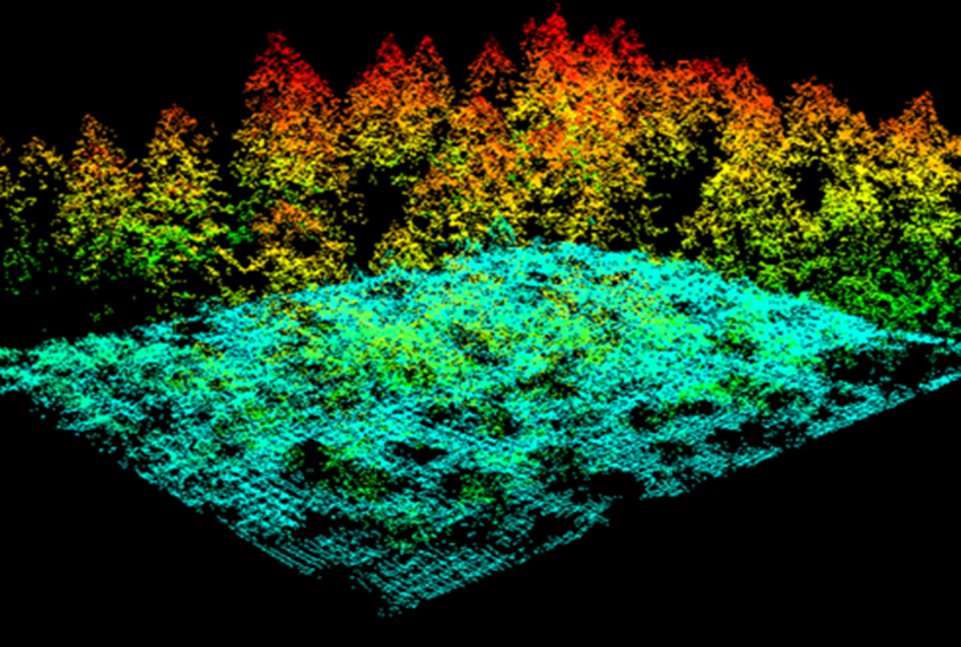
Forest Restoration and Conservation
Innovative technologies such as LiDAR (Light Detection and Ranging) and AI are aiding in forest restoration and conservation efforts.
LiDAR mapping provides precise 3D models of forests, facilitating better planning for reforestation and biodiversity conservation projects.
AI-powered systems help identify and protect endangered species and habitats.

Virtual forest
Forest can be seen as a sum of individual trees, topography and soil conditions, available infrastructure and other information.
With a virtual forest as digital copy of the existing forest stands, harvest planning efficiency and accuracy can be significantly improved.
Virtual environment in which forest machinery can navigate by matching data collected by various sensors.
Simulations can be used to determine costs and volumes of assortments harvested upfront for public tendering, negotiations with contractors or sales activities.
Virtual forest can be used for operations planning.
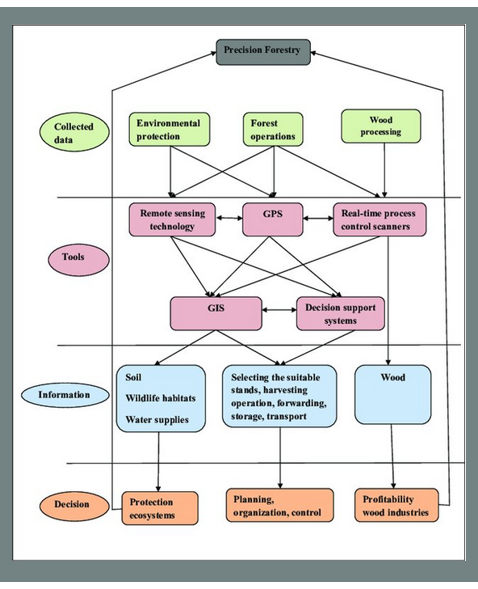
Precision forestry
Precision forestry is an approach to forest management that uses advanced technologies and data-driven techniques to optimize the management and utilization of forest resources. It involves the application of various technologies, including remote sensing, geographic information systems (GIS), global positioning systems (GPS), and data analytics, to enhance the efficiency and sustainability of forestry operations.
The implementation of precision forestry techniques is streamlining operations and enhancing resource utilization. Automated machinery equipped with GPS, sensors, and AI algorithms optimize tasks such as tree harvesting, planting, and transport, navigation and data collection.
This not only increases efficiency but also minimizes environmental impact and reduces operational costs. By leveraging technology and data, precision forestry aims to strike a balance between economic, ecological, and social aspects of forest management.
Data collection and communication in near-real time
Forest machinery can be equipped with various sensors for navigation and data collection.
The value of the data collected by harvest machinery becomes apparent with the close to real-time transmission of these data.
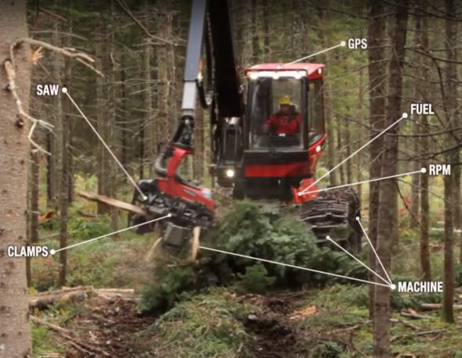
- Operator instruction is easier as detailed digital data of the stand, trees harvested etc. is available in real time.
- Managers do not necessarily have to be on site in person for progress and quality control.
- Data collecting harvesting machines enable management to perform extended data analysis and comparison of performance indicators for benchmarking.
- Inefficiencies can be eliminated via ad hoc support.
- Complex harvesting processes can be managed easier or can even be automatically controlled.
- Problem solving can be initiated before problems arise with advanced predictive analytics, e.g. predictive maintenance or yield predictions for truck and mill planning and operations.
- Post-harvest documentation is easier as all stand and harvesting related data such as yield, assortments harvested, area harvested etc. is documented by harvest machinery and stored in the cloud.
Supply Chain Transparency
Digitalization has brought about increased transparency in the forest supply chain.
Blockchain technology is being used to trace the origin of timber products, ensuring they are sourced sustainably and legally.
Smart contracts and immutable ledgers verify the origin of forest products, ensuring compliance with sustainable forestry standards.
This trend fosters consumer trust and aids in combating illegal logging, an issue that has plagued the industry for years.
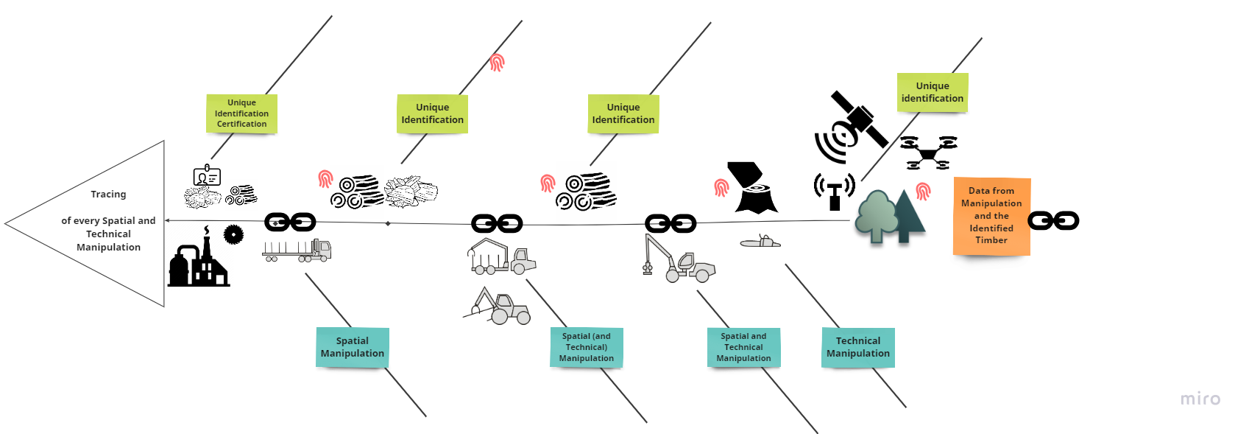

Internet of Trees and Services
The value of the Industry 4.0 results from the interconnection of its components.
One benefit of this interconnection is the decrease of media disruptions, e.g. from paper-based information to digital information. Less media disruptions result in an increase of performance in terms of time, cost, and processing errors, i.e. less mistakes and misunderstandings. With increasing automation some manual process steps, which are necessary today, would become obsolete.
We can conclude that the future developments in wood supply are all focusing on the issue of efficient information capturing, supply and allocation. With increasing digitization, the amount of collectable, storable and processable data is steadily increasing.
Collaboration and Stakeholder Engagement
Lastly, digitalization is promoting collaboration and stakeholder engagement in the forest sector.
Online platforms and mobile apps connect stakeholders, from local communities to international organizations, fostering a collective approach to forest management and conservation.
This trend ensures that diverse perspectives and expertise are considered in decision-making processes.
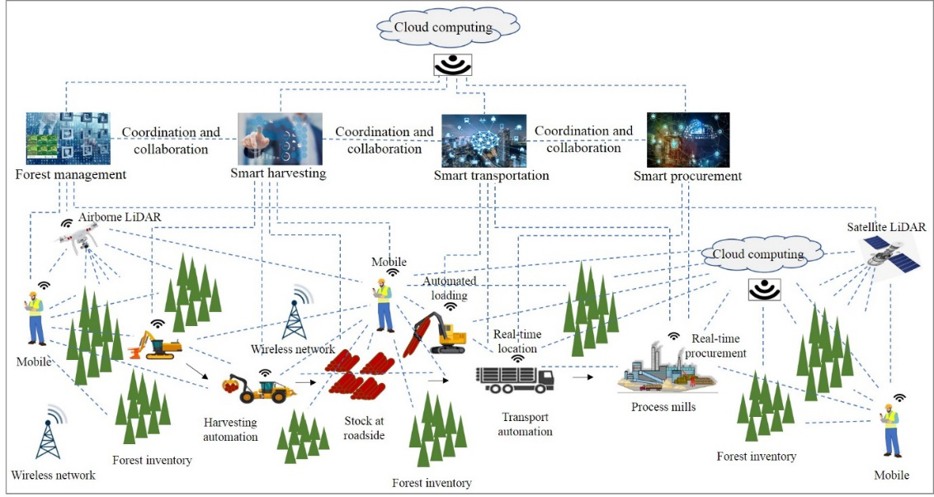
Challenges
While the traditional approach to forest operations has been gradually evolving over the years, incorporating new technologies, innovative management strategies, novel business models, and advanced decision support systems, the pace of these transformations has generally been sluggish. Forest operators have shown limited adoption of information and communication technologies, and the utilization of automation, digitization, and remote machinery control remains rare. This sluggish progress can be attributed to several factors.
Socio-economic challenges
- A substantial portion of forest resources is publicly owned, leading to a relatively conservative approach to forest management.
- Commercial forests are often situated in remote areas lacking advanced technologies and skilled workforce.
- Forest operators are often small companies which have limited capacities for investment and technological change.
- Labor qualification: most forest enterprises have not yet sufficiently qualified their workforce for new digital applications. Shortage of skilled workers dedicated to implementing new technologies in forest industry.
- The willingness to cooperate across organizational borders and the trust in other organizations within the supply chain.
- Ownership of data.
- Changing work environments, work organization and losses of jobs are feared on the labor side.
Technical challenges
- The introduction of data standards within production processes and beyond.
- The security of IT-systems as well as data protection.
- Sufficient availability of broadband internet connection.
- The investment risks occurring with the implementation of I 4.0 applications within the production processes. Many I 4.0 applications require significant changes in work organization and production processes. The forestry sector, characterized by long- term capital commitments, might be more hesitant than others at this point.
- The robustness and reliability of the equipment.
Conclusions
In conclusion, the digitalization of the forest sector is a transformative force, enhancing sustainability, transparency, and collaboration towards more efficient, sustainable, and data-driven forest management practices.
By harnessing remote sensing, big data, blockchain, and AI, the industry is poised to address critical challenges and build a more resilient and sustainable future for our forests. These trends, ranging from remote sensing and precision forestry to AI-powered analytics and blockchain integration, are collectively reshaping the industry's landscape.
Embracing these technologies not only enhances productivity and profitability but also fosters a more resilient and ecologically balanced forest ecosystem for future generations.
It is imperative for stakeholders in the forest sector to adapt and leverage these digital trends to drive positive environmental outcomes while meeting global demand for forest products.